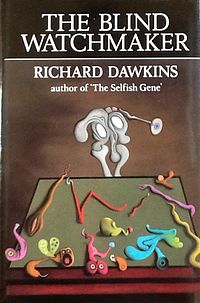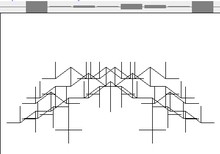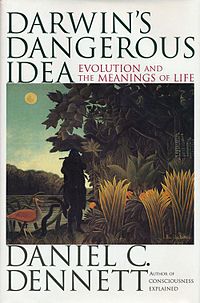
Darwin's Dangerous Idea: Evolution and the Meanings of Life is a 1995 book by the philosopher Daniel Dennett, in which the author looks at some of the repercussions of Darwinian theory. The crux of the argument is that, whether or not Darwin's theories are overturned, there is no going back from the dangerous idea that design might not need a designer. Dennett makes this case on the basis that natural selection is a blind process, which is nevertheless sufficiently powerful to explain the evolution of life. Darwin's discovery was that the generation of life worked algorithmically, that processes behind it work in such a way that given these processes the results that they tend toward must be so.
Irreducible complexity (IC) is the argument that certain biological systems with multiple interacting parts would not function if one of the parts were removed, so supposedly could not have evolved by successive small modifications from earlier less complex systems through natural selection, which would need all intermediate precursor systems to have been fully functional. This negative argument is then complemented by the claim that the only alternative explanation is a "purposeful arrangement of parts" inferring design by an intelligent agent. Irreducible complexity has become central to the creationist concept of intelligent design (ID), but the concept of irreducible complexity has been rejected by the scientific community, which regards intelligent design as pseudoscience. Irreducible complexity and specified complexity, are the two main arguments used by intelligent-design proponents to support their version of the theological argument from design.

In evolutionary biology, punctuated equilibrium is a theory that proposes that once a species appears in the fossil record, the population will become stable, showing little evolutionary change for most of its geological history. This state of little or no morphological change is called stasis. When significant evolutionary change occurs, the theory proposes that it is generally restricted to rare and geologically rapid events of branching speciation called cladogenesis. Cladogenesis is the process by which a species splits into two distinct species, rather than one species gradually transforming into another.

Richard Dawkins is a British evolutionary biologist and author. He is an emeritus fellow of New College, Oxford, and was Professor for Public Understanding of Science in the University of Oxford from 1995 to 2008. His 1976 book The Selfish Gene popularised the gene-centred view of evolution, as well as coining the term meme. Dawkins has won several academic and writing awards.
The teleological argument is an argument for the existence of God or, more generally, that complex functionality in the natural world which looks designed is evidence of an intelligent creator.
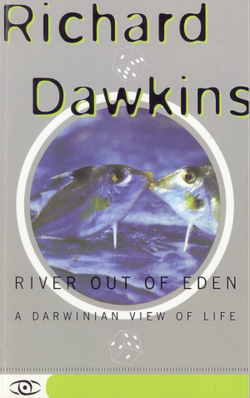
River Out of Eden: A Darwinian View of Life is a 1995 popular science book by Richard Dawkins. The book is about Darwinian evolution and summarizes the topics covered in his earlier books, The Selfish Gene, The Extended Phenotype and The Blind Watchmaker. It is part of the Science Masters series and is Dawkins's shortest book. It is illustrated by Lalla Ward, Dawkins's then-wife. The book's name is derived from Genesis 2:10 relating to the Garden of Eden. The King James Version reads "And a river went out of Eden to water the garden; and from thence it was parted, and became into four heads."

Orthogenesis, also known as orthogenetic evolution, progressive evolution, evolutionary progress, or progressionism, is an obsolete biological hypothesis that organisms have an innate tendency to evolve in a definite direction towards some goal (teleology) due to some internal mechanism or "driving force". According to the theory, the largest-scale trends in evolution have an absolute goal such as increasing biological complexity. Prominent historical figures who have championed some form of evolutionary progress include Jean-Baptiste Lamarck, Pierre Teilhard de Chardin, and Henri Bergson.

The weasel program or Dawkins' weasel is a thought experiment and a variety of computer simulations illustrating it. Their aim is to demonstrate that the process that drives evolutionary systems—random variation combined with non-random cumulative selection—is different from pure chance.
The watchmaker analogy or watchmaker argument is a teleological argument used to argue for the pseudoscientific concept of intelligent design. The analogy states that a design implies a designer, by an intelligent designer, i.e. a creator deity. The watchmaker analogy was given by William Paley in his 1802 book Natural Theology or Evidences of the Existence and Attributes of the Deity. The original analogy played a prominent role in natural theology and the "argument from design," where it was used to support arguments for the existence of God of the universe, in both Christianity and Deism. Prior to Paley, however, Sir Isaac Newton, René Descartes, and others from the time of the scientific revolution had each believed "that the physical laws he [each] had uncovered revealed the mechanical perfection of the workings of the universe to be akin to a watch, wherein the watchmaker is God."
Devolution, de-evolution, or backward evolution is the notion that species can revert to supposedly more primitive forms over time. The concept relates to the idea that evolution has a purpose (teleology) and is progressive (orthogenesis), for example that feet might be better than hooves or lungs than gills. However, evolutionary biology makes no such assumptions, and natural selection shapes adaptations with no foreknowledge of any kind. It is possible for small changes to be reversed by chance or selection, but this is no different from the normal course of evolution and as such de-evolution is not compatible with a proper understanding of evolution due to natural selection.
The junkyard tornado, sometimes known as Hoyle's fallacy, is an argument against abiogenesis, using a calculation of its probability based on false assumptions, as comparable to "a tornado sweeping through a junk-yard might assemble a Boeing 747 from the materials therein" and to compare the chance of obtaining even a single functioning protein by chance combination of amino acids to a solar system full of blind men solving Rubik's Cubes simultaneously. It was used originally by English astronomer Fred Hoyle (1915–2001) in his book The Intelligent Universe, where he tried to apply statistics to evolution and the origin of life. Similar reasoning were advanced in Darwin's time, and indeed as long ago as Cicero in classical antiquity. While Hoyle himself was an atheist, the argument has since become a mainstay in the rejection of evolution by religious groups.

Biological or process structuralism is a school of biological thought that objects to an exclusively Darwinian or adaptationist explanation of natural selection such as is described in the 20th century's modern synthesis. It proposes instead that evolution is guided differently, basically by more or less physical forces which shape the development of an animal's body, and sometimes implies that these forces supersede selection altogether.

Evolution: A Theory in Crisis is a 1985 book by Michael Denton, in which the author argues that the scientific theory of evolution by natural selection is a "theory in crisis". Reviews by scientists say that the book distorts and misrepresents evolutionary theory and contains numerous errors.
The Ultimate Boeing 747 gambit is a counter-argument to modern versions of the argument from design for the existence of God. It was introduced by Richard Dawkins in chapter 4 of his 2006 book The God Delusion, "Why there almost certainly is no God".

Revelation, Rationality, Knowledge & Truth is a book written by Mirza Tahir Ahmad, the fourth Caliph of the Ahmadiyya Muslim Community. Published in 1998, it was originally written in English and was subsequently translated into Urdu and Arabic. The book explores religious thought and the role of revelation throughout different ages of human civilization. It is a comprehensive thesis on the phenomenon of revelation in different faiths and seeks to argue for the existence of God through rationality.

Growing Up in the Universe was a series of lectures given by Richard Dawkins as part of the Royal Institution Christmas Lectures, in which he discussed the evolution of life in the universe.

The Edge of Evolution: The Search for the Limits of Darwinism is an intelligent design book by Discovery Institute fellow Michael Behe, published by the Free Press in 2007. Behe argues that while evolution can produce changes within species, there is a limit to the ability of evolution to generate diversity, and this limit is somewhere between species and orders. On this basis, he says that known evolutionary mechanisms cannot be responsible for all the observed diversification from the last universal ancestor and the intervention of an intelligent designer can adequately account for much of the diversity of life. It is Behe's second intelligent design book, his first being Darwin's Black Box.
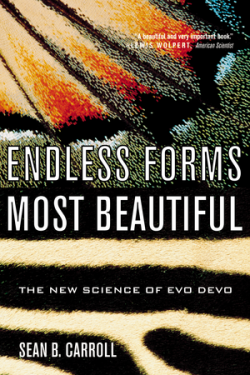
Endless Forms Most Beautiful: The New Science of Evo Devo and the Making of the Animal Kingdom is a 2005 book by the molecular biologist Sean B. Carroll. It presents a summary of the emerging field of evolutionary developmental biology and the role of toolkit genes. It has won numerous awards for science communication.

Natural Theology or Evidences of the Existence and Attributes of the Deity is an 1802 work of Christian apologetics and philosophy of religion by the English clergyman William Paley (1743–1805). The book expounds his arguments from natural theology, making a teleological argument for the existence of God, notably beginning with the watchmaker analogy.
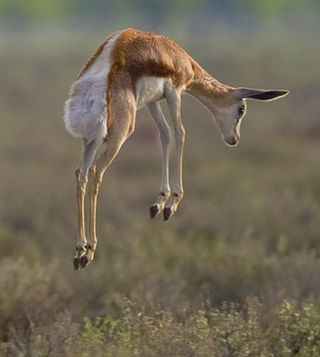
Teleology in biology is the use of the language of goal-directedness in accounts of evolutionary adaptation, which some biologists and philosophers of science find problematic. The term teleonomy has also been proposed. Before Darwin, organisms were seen as existing because God had designed and created them; their features such as eyes were taken by natural theology to have been made to enable them to carry out their functions, such as seeing. Evolutionary biologists often use similar teleological formulations that invoke purpose, but these imply natural selection rather than actual goals, whether conscious or not. Biologists and religious thinkers held that evolution itself was somehow goal-directed (orthogenesis), and in vitalist versions, driven by a purposeful life force. With evolution working by natural selection acting on inherited variation, the use of teleology in biology has attracted criticism, and attempts have been made to teach students to avoid teleological language.
